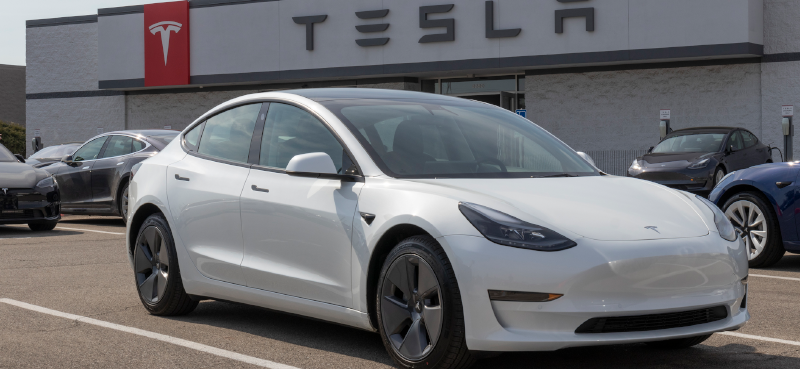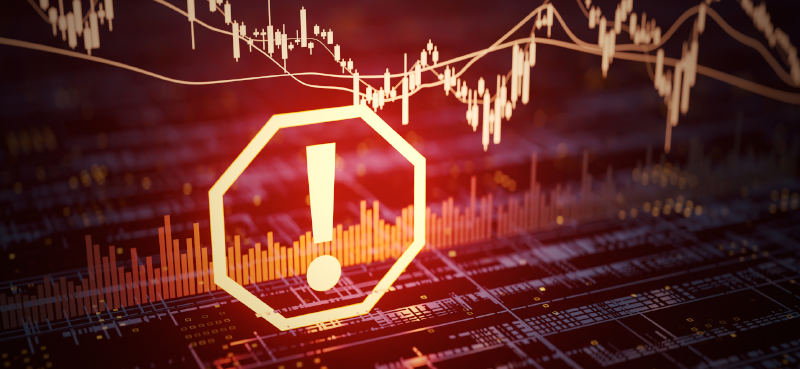My Philadelphia Eagles lost their first game of the season last night… and I’ll tell you why I’m happy about it.
The markets are in rally mode as investors celebrate the latest inflation data. I explain why this kind of action is normal in a bear market… why we’ll see a big separation between winning & losing sectors… and what Walmart’s latest results say about the overall economy (hint: it’s not good). Plus, I share four stocks that are poised for big gains in 2023… and four others you should avoid.
The Fed remains hell-bent on destroying the economy as it fights inflation… And while the current rally feels great, 2023 is shaping up to be a difficult year for investors.
I explain why you should expect many stocks to fall 30% or more from current levels… and how to play both sides of the market using the put strategy Genia recommends in Moneyflow Trader. Learn how it can make you a fortune as stocks crash. And if you have any questions, email me.
- My Eagles finally lost a game [0:30]
- This is a typical bear market rally [1:58]
- 4 winners and 4 losers for 2023 [7:53]
- What Walmart’s results can tell us about the economy [11:23]
- Don’t expect a Fed pivot anytime soon [17:55]
- How to play both sides of the market and make a fortune in 2023 [24:57]
Wall Street Unplugged | 971
4 stocks that will crush it in 2023… and 4 that won’t
Announcer: Wall Street Unplugged looks beyond the regular headlines heard on mainstream financial media to bring you unscripted interviews and breaking commentary direct from Wall Street right to you on main street.
Frank Curzio: How’s it going out there? It’s November 15th. I’m Frank Curzio, host of the Wall Street Unplugged podcast, where I break down the headlines and tell you what’s really moving these markets.
Frank Curzio: What happened last night? Excited, getting home from watching my daughter in the playoffs, watching the Eagles, and man, Washington just beat the crap out of them. Couple crazy calls, but wow, controlled the whole game. It was a great job by them. NFC East is awesome. Good for the Eagles, too. I’m an Eagles fan. Bad for that guy in ESPN. I think ESPN made him write an article that just went up, just before the game. ESPN is having the game on TV, so they’re trying to promote as much as they can, and this guy highlights, and must have took him like five, six hours to do this whole article, showing the Eagles going 17 and 0, and who they play, and the points spreads, and all this crap, and they lose. They lose to Washington there by over 11 and a half.
Frank Curzio: But I think it’s good. It was funny when you’re comparing this team, and you’re looking at Jalen Hurts, who has never had a comeback win ever, even though he should have had one yesterday, if that guy didn’t fumble that ball. But losses are good. Makes you try a lot harder, and you have to work on so many new things. But it’s why football is great every given Sunday, especially in divisions. Divisions, I don’t care, even the NFC East, any division, I don’t care how great you are, how terrible you are. When they play each other, they just know each other, and usually, those games are tight and tough. So, really good job by Washington. Played great. Ruined my Sunday, especially that terrible, horrible call at the end of the game. Wow. Stayed up all day and then, all of a sudden, a ridiculous penalty, and that’s it. It’s over. Eagles didn’t even get a chance to get the ball back.
Frank Curzio: Anyway, let’s move on, since a lot of stuff’s going on. The market, very, very well. What do we have starting what, last week? CPI showed inflation finally moderating. We have solid earnings from bellwethers like Home Depot and Walmart this morning. Home Depot’s guidance wasn’t that great, but still, pretty decent numbers. Then we had the Producer Price Index, also showing inflation is moderating. And what’s going on? It’s leading to a huge bid in equities, because we’re seeing the dollar retreat, which is very important. Pay close attention to that dollar. So, the market was crashing as the dollar surged. Now, it’s starting to retreat and yields are falling, especially the 30-year, which is now below 4% to 3.8. If you’re looking at technicals, especially quant funds, stuff that we have access to, but unwinding these huge shore positions to the tune of 225 billion over the past couple of days.
Frank Curzio: And there’s experts that track these funds like two or three of them, had to get notes from, and they’re incredibly bullish, highlighting that tens of billions more is going to likely flow into the market over the next few weeks. And you look at S&P 500, has taken out some key trend lines including these 50-day and 100-day moving averages. So technicals rising, beating out fundamentals right now. But it’s nice to see stocks rallying, and most people are long. And it’s very, very, very common to see these types of huge one day moves like we saw last week, 7% in the Nasdaq this week. So, no one and a half, 2% moves as I’m taping this. But it’s very common to see these types of huge moves inside of bear markets, especially with the major indices, where you don’t see them going up two, 3% a day unless you know someone’s leaning one way or the other. In today’s market, still a lot of money sloshing around, especially these quant funds. Any kind of trigger, the upside of downside. I mean, you see massive flows go back and forth. That’s what we’re seeing right now.
Frank Curzio: When I look at this market, it reminds me why it’s such a great strategy to be buying long dated puts. We see massive moves like this to the upside, they don’t hurt you. It allows you to stay long in stocks. All your favorite names are long-term, which we have done with Curzio Research Advisory, Curzio Venture Opportunities, we focus on small, mid-cap names. Those positions are doing well in this rally. Very well. But by buying these long dated puts, it’s also giving yourself the opportunity to make 100% to 300%, even more returns, betting against certain stocks in sectors. And let me tell you something, this is a unique market, one you don’t see often, not during the dotcom bubble of 2000 when that crashed. Not during or shortly after the credit crisis. Not post-COVID, when we injected 11 and a half trillion, both fiscal and monetary into this market, watched every single asset class surge to all-time highs into this year.
Frank Curzio: It’s different, because there’s a huge gap between the companies who will be able to navigate the crazy conditions we’ll likely see next year, and the ones that won’t. And guys, make no mistake, because we’ll have extremely, extremely difficult conditions where the Fed is not lowering rates anytime soon. Still, through next year, aggressively removing liquidity from the market. QT, quantitative tightening, that’s called, a market where the Fed is intentionally trying to crush demand and cause much higher unemployment. Those are the conditions. We don’t make them up. That’s the way it is. That’s what happens when you have inflation.
Frank Curzio: I know, saying there’s going to be winners and losers inside this crazy market, it sounds almost contradicting, like I’m playing both sides here, which I hate because I hate seeing when analysts get on TV. They say, “Well, the market’s definitely going to crash 30%, but it could go up over the next two years.” This isn’t that. Let me explain the importance of this, because I’ve never seen this before. And this is what you’re going to see next year. And if you play it right, you’re probably going to have the most gains you’ve seen in the past five years, at least probably the past 10 years, with market conditions all over the place.
Frank Curzio: Because in bull markets, what do we see all the time? Entire sectors go high. Everybody makes money. Everyone’s a genius. Cab drivers are genius, nieces and nephews, half your age, genius. “Oh, this is so easy. Porting away, this is easy. I’m Wall Street, so freaking easy. Oh, my god, it’s awesome.” But entire sectors go, like cloud, FAANGs, Web3, banks. Same thing with bear markers, right? Entire sectors usually go low. Look at gold stocks, look at energy pre-COVID. Every energy stock got nailed. Some more than other others, yeah, but they all got nailed. Real estate stocks this year, which are down 25% year to date.
Frank Curzio: Semis, every semi got crushed over the past couple months, and for most of this year, like pre-October. So, it didn’t really matter what cloud stock you bought from 2017 through January 2020, which was COVID peak. The entire sector did well. Yes, you could have said, “Well, Frank, I had Nvidia, and I had AMD, and that killed it.” But even Intel doubled from that timeframe, mid-2017 to pre-COVID highs, early 2020. Intel doubled, so you still made money. It didn’t matter what gold stock you bought over that same timeframe, they all sucked. You lost a little bit less money in the producers, but even the producers came down a ton. Just everything came. There’s no separation.
Frank Curzio: Going forward into next year, we are going to see massive, massive separation in companies within the same sectors. Like Norwegian Cruise Lines will thrive, all their debt is fixed. Strong balance sheet folks, and high end consumers, while Carnival is in a terrible position. Massive debt, higher rates focuses on the lower to middle class consumers, where inflation is really hurting those people a lot more with fuel and food prices. And the Fed’s going to continue to make it more and more difficult, removing liquidity from the system. Where JP Morgan will thrive, while Credit Suisse, news under the radar because everything… Walmart’s taking center stage and producer pricing those things. Credit Suisse just sold a significant part of its securitized products portfolio to Apollo, to help lower leverage significantly.
Frank Curzio: Look at Ford, with a saddle of massive debt. Loses money on every new EV it sells, while GM’s in much better position from a balance sheet perspective, is more focusing on autonomous vehicles. Ford said, “We’re done with automotives, we’re going to EVs.” They’re autonomous along with EVs, gas vehicles. With Disney plus, we’ll continue losing billions on streaming as average revenue per user is declining. It’s under $4, compared to close to $12 for Netflix. What does that tell you? It shows that their audience really doesn’t want to pay for its platform, due to the lack of new content. You need more new content. They should do Disney add-ons or Star Wars add-ons. Your best content’s not going to that platform. I talked about this, the past couple weeks since they reported. But that lack of new content, it’s killing it. While Netflix is about to place ads on its site, where it’s not going to impact its user base that much, because people love Netflix. Why? Because of the best new content in the industry by a mile.
Frank Curzio: I think, it’s Dead To Me, it’s coming out with their new season, a couple days that we watch. I mean, it’s Cobra Kai, it’s constantly… Stranger Things, constantly… Things that people go home to see. And you know what? I don’t mind watching a commercial or two in the middle of that. I never had to do that before, but that’s fine. I’m not going to cancel Netflix. But obviously, just the way the platform is for Disney, you’re seeing the average revenue per user go lower and lower, because they’re signing up more people basically, for very, very low price, or most of them for free. But now, what are they going to do? They’re going to raise prices and place ads all over them. Good luck with that strategy. With Netflix, they’re going to start making money through the advertising model, which is basically free money. It’s free money. People are going to pay them, just put a couple of, it’s their content’s already there.
Frank Curzio: I can see Netflix, which is double off its lows already, going up another 30% next year, while Disney could easily fall 30% and still be expensive. It’s trading at 25 times its forward earnings while… I mean, earnings are going to be what? 450 they’re projecting for next year? They was supposed to be $7 at the end of 2021, originally. They had to keep lowering them, and lowering them, lowering them, lowering them, lowering them, to the point where now, everybody’s getting it. Streaming’s the worst business in the world, and Disney didn’t come up with some revolution idea for Disney+. They had to do it because they had to. Everything was closed, they were more impacted during COVID. Even after COVID, their parks, certain capacities, theaters, cruises, everything. They had to do something, and good for them. They did something, people bought into it. They didn’t care about the numbers.
Frank Curzio: All they care about is how many subscribers… They didn’t care if anyone was paying for it. Now, it’s coming back to kill them. And they keep pushing this strategy and losing more money. But there’s a big difference, and they’re both in streaming. We’re seeing a great example of this with what? Walmart from today. You see Walmart’s numbers? And this morning, solid guidance. Be able to sell a lot of its inventory, which went up significantly the past two quarters, especially in apparel, which is killing a lot of companies. While significantly, and here’s the key here, raising prices. Raising prices. Unit sales were down, but the average ticket price was up significantly. Meaning they able to pass on higher prices to the consumer, especially in what? Groceries.
Frank Curzio: So, even those higher prices at Walmart and they’re raising those prices, are still lower than most competitors, especially for food. And, Sam’s Club is killing it. They have the Walmart+ programs, millions and millions of people signing up. It’s like a hundred dollars a year. You give consumers unlimited, free delivery, fuel discounts, free access to Paramount+, early access to Black Friday deals, which everybody loves. But they’ll provide a monthly fee on existing customers, having them pay more, kind of what Costco does. You got to get the membership and all the shop, which is a fantastic strategy. They’re also buying back $20 billion worth of their stock, increased their buyback program significantly. So you have Walmart, a company, management team that’s adapting to tougher conditions, where the CFO in an interview this morning, while they reported this results and why that stock is driving the Dow higher today, it’s up about 7%. He said, “Pocketbooks are stretched. People have less discretionary income or less disposable income to spend on things.”
Frank Curzio: So, they’re looking for value, and that value is Walmart, because even as they’re raising prices, it’s still cheaper than a lot of other people out there and companies. But that’s an amazing quarter. Let me ask you a question: Do you see all retailers being able to do this? Being able to reduce their massive inventory that quickly, being able to pass off higher prices to their consumers, being able to buy back a ton of their stock? Not 20 billion. The size of Walmart’s massive… But they have a great strong balance sheet. So, Walmart’s a winner, and think about it, because this is for a retailer, Walmart, that is going to see earnings decline around 10% next year based on estimates. And also, saw inventory rise 13% year-over-year.
Frank Curzio: So, we have a stock which is rising, rising significantly. I think 150, was it a 52-week high? Is less than 8% off of that right now. We have a stock that’s rising while earnings per share are expected to fall next year. And now, Walmart’s trading at 26 times forward earnings right now. Do they deserve that premium? Yes, I think they do. I don’t know if I’d go, I’d tell you to buy Walmart at this level, because now expectations are really, really high. Where if they do come out, and inventory levels do skyrocket, and you’re going into the holiday season where holiday season is horrible for retailers, it’s terrible. Absolutely terrible. It’s everybody fighting to discount products as much as they can to get that sale. They have Black Friday deals now, coming out. I got it from Walmart, got it from Best Buy already. I remember, Black Friday used to be actually Friday. Now, it’s like weeks ahead of time.
Frank Curzio: Eddie Lampert went to one of our gatherings at TheStreet.com, and I think it was a Christmas party. And Cramer’s really good friends with him back in the day, and just Sears, huge billionaire at the time. I know you know what happened to everything with them. But anyway, and he was saying, he’s like, “I hate.” He’s like, “I wish we’d just close for December.” He’s like, “It’s the worst. As a retailer, it’s the worst.” It’s horrible. It’s tough. It’s tough to make money. You have to discount significantly. That’s what people are looking for. They’re shopping from site to site, to site, to site, to site to get the best price on whatever product. And now, so many apps that compare everything. Do they deserve trading that 26 times forward P, do they deserve that multiple? Yeah, I mean, with that quarter. But the question you have to ask yourself is, “Will other retailers be able to command that multiple, while likely having worse metrics?” No.
Frank Curzio: I mean, retail’s not back. You’re not going to say, “Retail’s great, we got to buy all retail.” I mean, yeah, we got a lot of retail companies reporting tomorrow. Breaking down the second. But my point is, you’re going to see management teams here. They’re going to implement new strategies, cost cutting measures where they’re going to have their costs go lower, while earnings per share go higher. And these are the names that are going to significantly outperform next year. However, we are also going to see a lot of names fall 30% plus from these levels, as the tough market conditions for next year, they are still 100% intact. Nothing has changed. And you can say, “Well, the CPI number, Frank, what are you talking about? Showed moderating inflation.” It’s up 7.7%, year-over-year. Fed, we’re looking for under 2%. If you’re looking at the terminal rate for the Fed, it still hasn’t gone lower. It’s still 5% for next year. Terminal’s where they expect it to peak.
Frank Curzio: I mean, three, four months ago, we were looking at three and a half percent as the peak. Now it’s 5%. But don’t worry. CPI’s moderating a little bit. How long can we moderate when Walmart’s raising prices, all these companies are beating or raising prices? Home Depot reported, they’re raising prices. They’re seeing less unit sales and they continue to raise prices. They’re still passing off these higher prices, and it’s not just for their higher import costs. Their margins are actually increasing, which means they’re even adding more onto that, and they’re getting it for now. But it tells you, those thinking inflation is just going to come down tremendously, it’s crazy.
Frank Curzio: And I say those conditions, those tough conditions, still a hundred percent, were rising. PPI reading from today showing producer prices moderated very, very slightly. They’re still up 8.3% year-over-year. They will up 8.4% last month, year-over-year. But 8.3% is better than 8.4%. Let’s celebrate. That’s insane inflation right there. That’s not, “Things are great.” We needed to see moderation, we’re going to see it. The Fed’s raising rates at its fastest pace and amount in forever, and it’s crazy. And a lot of these rate hikes aren’t even being factored in yet, into next year. It takes months and months, and months. But it’s not like, “Conditions are great, go all in, we’re fine.” No, we’re going to have a market where the Fed will continue raising rates into next year. Definitely, a 50 basis point hike. They all came out and said it. Even now. You can see more reports tomorrow coming out, too, from Fed Governors.
Frank Curzio: But most them are like, “Yeah, don’t think we’ll pause any time soon,” and you can’t. Because I was under the impression, three, four months ago that, when I got bullish, that once you have higher rates and you stop, you’re not going to see inflation come back, but you could. I mean, just to see what these companies are reporting, and car companies are reporting, and the prices that continue to raise. It could. I just automatically go to shrink from here. So, the Fed continue to raise rates into next year, probably into March, continue to take liquidity out of this market all next year, through quantitative tightening. They’re shrinking their balance sheet tremendously. They shrink it by trillions. They will not be lowering rates anytime soon, with inflation still rising over 7%, year-over-year. If it’s rising 5% year-over-year, they’re not going to lower rates, unless we see something break significantly. The market absolutely collapse. Earnings fall well off a cliff. Let’s see.
Frank Curzio: They’re going to keep its initiative of what? Destroying demand while trying to force much higher unemployment. And think about that for a minute. The Fed’s initiative is to destroy demand. They’re doing it, industry by industry. Now, you’re seeing semis, you’re seeing separation. You’re seeing discounts in semis where, “Hey, you know what? Taiwan Semi, Buffett just came into it.” That could be a great bargain. Some of them are, some of them aren’t. AMD still trading at 25 times forward earnings, and they’re not growing earnings from ’23 to ’24. That’s a pretty high multiple for not growing earnings. Nvidia is still expensive. But if you think about that for a minute into next year, and you’re like, “Wow, I got to go all in,” and they’re missing these big moves.
Frank Curzio: You don’t want to miss the big moves. You want to be long in your favorite stocks. But, think about how many companies are going to be impacted significantly. Talk to your friends, talk to their businesses. You’re hearing it out there. You have friends who are lawyers, who were busier than ever, and now they’re like, “Hey, Frank, you know any companies that need help?” Or seeing the housing market, same thing across the board. People are emailing me. Definitely different. You’re seeing people cut back, and some people saying, “Hey, we’re starting to see it.” Well if you’re starting to see it now, where do you think it’s going to be in three months and six months with the Fed, again, removing trillions of liquidity from this market, keeping rates relatively high, not lowering it anytime soon. And now, we have a S&P 500 that’s trading at over 20 times forward earnings, with earnings going to decline definitely, year-over-year. They could be down more than 20%, year-over-year. Not based on the current estimates though, but you’ll see it.
Frank Curzio: And the base case scenario, Morgan Stanley came out with it, is the only one that came out below $200. Right now, the expectation is $237 total earnings for the S&P 500. That’s the number one. They say the S&P 500 is trading at 15 times or 17 times, right? They take the S&P 500 price and they divide it by earnings. That number’s 234 right now, I think? 234. Now you’re seeing, Goldman said a base case next year is going to be 200; now it’s 195. Morgan said they’re going to keep going lower and lower, and lower into every quarter, just like they did last quarter. Looked like, “Wow, 75% of earnings beat estimates.” Well 80% would’ve missed estimates if you kept the same estimates from three months prior, which showed that earnings for Q3 was expected to grow 10 and a half percent. However, they lowered them so much they were only expected to grow one and a half percent. And what do we see? A lot of companies beat those lower expectations.
Frank Curzio: At the end of the day, the earnings number is the earnings number, and you have to pay attention to that. And what I mean by that is, I don’t care if you expected to earn 550 and then you bring it down to 450, and you earn 460, it’s still 460, which means your earnings are not growing as faster. Stock prices are going up. So, your PE ratios are getting higher, higher, getting very expensive in a market, that you don’t have the Fed no longer to bail you out, something we haven’t seen in the past 12 years. So, if you don’t think it’s going to be difficult market conditions next year, think again. Be prepared. And if you’re wrong, you’re still long in some stocks. We get nice portfolios set up. When I look into next year, it’s not really a question on being bullish or bearish and saying, “Well, I think the market’s going to crash here. The market’s going to go up here,” whatever. I think we’re going to have both conditions, based on what stocks you’re focusing on.
Frank Curzio: That’s why staying long in your favorite names, while buying long dated puts on struggling companies that are going to have to continue lowering earnings significantly over the next two to three quarters, is a strategy you’re likely to make a killing on. Because yes, you have data like this showing, “Okay, we’re moderating finally,” whatever. What happens if we don’t moderate? What’s going to happen? Everyone’s going to be like, “Wow, the Fed’s not going to lower anytime soon.” But regardless, look at the massive layoffs. Leading into all these earnings calls, look how many companies fell by 20% plus in a day. Even some of the largest companies. Look over the last two earnings periods. What do you think is going to happen over the next two or three? That’s what you’re betting at. You’re betting right now. Well, okay, if you go in right now, the market’s nice and high. You have some companies, where you have Walmart in your portfolio, you’re loving those earnings. A lot of other companies’ earnings, we have very good earnings from many of our companies in our portfolios.
Frank Curzio: But, what happens over the next two, three quarters? Are the cost cutting, is that enough demand destruction, liquidity removed from the market? How many companies are still sitting? They don’t have the balance sheets of the Walmarts or the Exxons, and stuff like that. They don’t have those. And you need one bad quarter for these things to come down tremendously. And you’re going to make a killing. A killing on some of these puts and plus using this strategy, it keeps you grounded, right? You’re not pulling your hair out or losing sleep with every 10% plus fall in the markets, over the next whatever, two months, followed by a 6% one day pop where you’re like, “Holy shit, what’s going on?” I mean, it’s impossible for the average investor to navigate through these markets.
Frank Curzio: You’re not trading, you have your jobs, you’re away from work, you’re not looking at the markets all the time. That’s why you listen to the podcast. So, you follow some of our newsletters to help you out with some of these things, but it keeps you grounded. Because how do you navigate through these markets when you see this? These massive, huge 25% decline in the markets, 30% followed by a one day, 7% move, because inflation is, it’s up 8.3% instead of 8.4%. Think about that for a minute.
Frank Curzio: But this strategy of being long in your favorite stocks on long dated puts, that’s why we have Moneyflow Trader. It’s what it does. A product run by Genia, which has booked massive gains this year, massive when closing out a triple digit position last week. It sounds crazy with the markets moving the way they are, but still, during earnings season, one of those companies fell tremendously. Tremendously. But that’s what you’re betting on, and the only money you could lose, is the money you put into that trade. So, say if you have a hundred thousand dollar portfolio, have a $10,000 portfolio, take 5%, 10% of it, even 5% of it. If you lose that money on those puts over a year, it’s probably because the market’s going to go significantly higher and you’re long. But it allows you to sleep at night. It allows you to play both sides of the markets, which is something that is extremely difficult to do.
Frank Curzio: Where Moneyflow Trader sucked, when we first, again, looking at earnings, 2018. Knowing that they weren’t going to increase in 2019, and the market went up tremendously. I thought 2019 would be tremendous. I thought 2020, the market was going to crash. It crashed because of COVID, which was easiest for to see, but Moneyflow Trader was not a good newsletter, because everything, in every sector was going higher and higher, and higher. And you could say that after the past three years, you could say that even outside a few periods from 2010, post-credit crisis to 2020. It’s when COVID started, in January, February, around there. A lot of stocks went higher. So, you’re not used to seeing these types of conditions, where the Fed’s not going to be there for you. They’re not lowering rates anytime soon. They are telling you, “We are destroying demand. That’s our job. And to significantly raise the unemployment rate, which we need to do,” which means the economy, that’s not good.
Frank Curzio: I can’t say it any better than that. That’s not good conditions for the economy. That’s why we’re definitely going into a recession next year, which means earnings are likely to fall much more because the word recession just creates negative sentiment, which means companies are going to tighten up. They’re not going to spend as much, they’re not going to provide crazy forecasts, they’re going to cut CapEx. So, growth is going to be very, very limited. And there’re some companies like Walmart that will do a great job, but there’s not going to be many. And you have to be careful out there and you want to protect yourself, because the next year, two years is going to be extremely difficult. But it’s a period where you can make excessive gains using this strategy.
Frank Curzio: If you want to learn more about Moneyflow Trader, just go to curzioresearch.com. Go to Google, learn about it. It’s not too difficult. You can do it right through your account. You need level one. You might need level two, in terms of options, but you can only lose the amount that you put in, so there’s no leverage there. It’s like buying a stock and it goes to zero. That’s the most you could lose. It asks you to sign something, and the next day, you’ll be able to trade it. It’s very easy to put these trades in. You follow Moneyflow Trader, Genia tells you exactly how to do it. You don’t have to worry about implied volatility. You just got to do exactly what she says. “Buy this put, below this price, limit order, enter, boom.” That’s it. It’s that simple.
Frank Curzio: Well, if you have any other questions, just email me, frank@curzioresearch.com. But I keep pushing this, because it’s a strategy that I’m making money on. It’s a strategy that everyone who owns Moneyflow Trader. Most people that own Moneyflow Trader are doing very, very good. They’re sending me screenshots of the gains that they’re making, which is incredible, but it’s something that can make you a lot of money in this market. So, it’s definitely worth researching and trying. That’s up to you, whether you want to do it through Moneyflow Trader, or you want to do it yourself. But it’s a great strategy going into next year, because we’re going to see massive uncertainty and the Fed’s initiative has not changed. Not even 1%.
Frank Curzio: Nothing has changed. We still see massive inflation. We’re not going to see lowering rates, we’re going to see quantitative tightening. They’re going to continue to try to destroy demand. They’re going to continue to try to raise unemployment. None of that has changed. We’re seeing moderating, which of course, we had to see. But next year’s going to be very, very difficult and you don’t have to worry about these massive moves in the market, because you’re going to make money, either direction the market goes, most likely, if you’re following the right person, and you’re buying the right puts, and you own the right stocks.
Frank Curzio: So questions or comments, feel free to email me, frank@curzioresearch.com. We’ll be back tomorrow with Daniel Creech, to break down some more earnings from retailers. Let’s see if Target, man, going to be tough to follow up Walmart. Lowe’s, they follow up from Home Depot. Let’s see if there’s separation there. TJX, they’re all reporting before the bell tomorrow, so we’ll break those down. And very important, indicated tomorrow, retail sales for October. We could also move the markets. So, lots of fun stuff we’ll break down tomorrow, and I’ll see you then. Take care.
Announcer: Wall Street Unplugged is produced by Curzio Research, one of the most respected financial media companies in the industry. The information presented on Wall Street Unplugged is the opinion of its host and guests. You should not base your investment decisions solely on this broadcast. Remember, it’s your money and your responsibility.
























